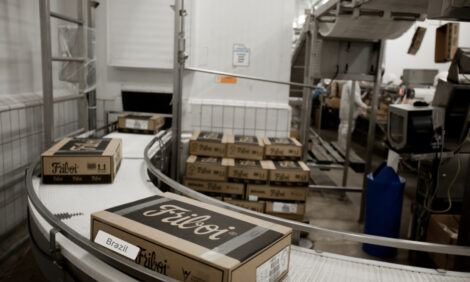



Store Prices Hold Up Despite Poor Deadweight Trade
NORTHERN IRELAND, UK - Since the start of June, Northern Irish (NI) beef finishers have been dismayed by the declining deadweight prices available for cattle at the local plants.In this type of environment one would expect reduced producer confidence. However, if recent store prices are anything to go by, confidence would appear to be robust. Over the last six weeks, store steer and heifer prices have been holding up well and for the most part, have been slightly higher than last year’s prices. DARD figures show that over the last month, there has been a significant increase in the price paid for 150-300kg steers (see Figure 1). According to DARD figures, this type of stock was making £354/head on average in mid-July having gradually fallen in price through the early part of summer. By mid-August prices were averaging £482/head, 32 per cent higher than the equivalent price last year. Over the course of the year to date, prices have been on average three per cent or £12/head higher than last year.
Figure 2 shows how the price of 300-400kg animals increased sharply in mid-August, with prices£68/head higher than the same week last year. The weekly average price of these heavier stores has been 4 per cent or £20/head higher so far in 2010. Given the state of the deadweight trade and assuming there has been no increase in the average weight of store cattle it is surprising that the store trade has been so resilient in 2010. The question is; what is driving it? Explanations for price changes are generally found in movements in demand and supply. On the supply side, it is clear that the availability of beef-sired store cattle has become more limited in 2010. In July 2008, there were 252,000 beef-sired cattle aged 12-18 months on the ground in NI. By July this year, numbers had dropped significantly to 218,000 head. This is a decline of 34,000 head or 13.5 per cent, although it is offset to some extent by an 11,000 head increase in dairy-sired stock in the same age band. This tighter supply certainly provides some explanation for the stronger store prices in 2010.
On the demand side, it is difficult to see why finishers would be willing to pay more for stores this year. On the face of it, current deadweight prices would suggest that prospects are more limited than last year and the cost of carrying stock through the winter is likely to be higher with rising feed costs. These developments may mean that finishers will be contemplating tighter margins when they ultimately slaughter these cattle. In this environment it is difficult to see how they would have much appetite for paying higher prices unless they have managed to secure improved forward contracts which reflect the increased input costs.
There is a strong possibility that such arrangements have been made and these would certainly encourage finishers to compete for store cattle, thus underpinning higher prices. It may also be fair to say that other producers may be taking a calculated risk that in paying these higher prices, they may be rewarded with stronger deadweight prices at finishing due to the ongoing reduction in the suckler herd.
It is also worth noting the contribution that non-commercial farmers may be making to store cattle demand. Not every beef farmer is fully tuned into the language of margins and profits and others are hobby farmers who are not commercially motivated. Whether they realise it or not such producers may be content to subsidise their beef enterprise through their single farm payment or off-farm employment. In the face of reduced margins, demand from these producers in the store ring is probably quite resilient and this also has the potential to underpin prices.
This creates a tough environment for commercial finishers, particularly those that do not have the required selling-power to negotiate forward contracts. However, suckler producers will not complain as they need every penny to cover the cost of the suckler cow. Even at current store prices it is debateable whether full costs are being covered, although these higher prices may provide some encouragement for producers to put cows back into calf next year.
TheCattleSite News Desk


